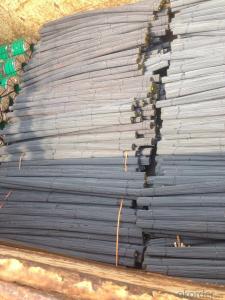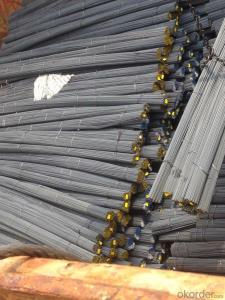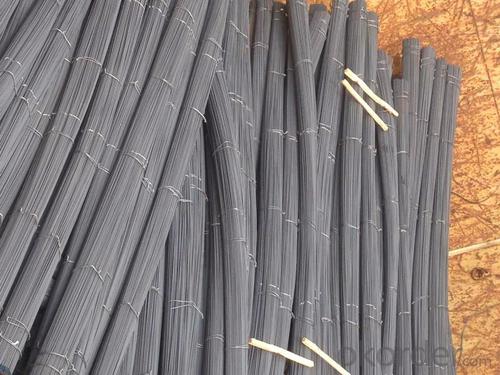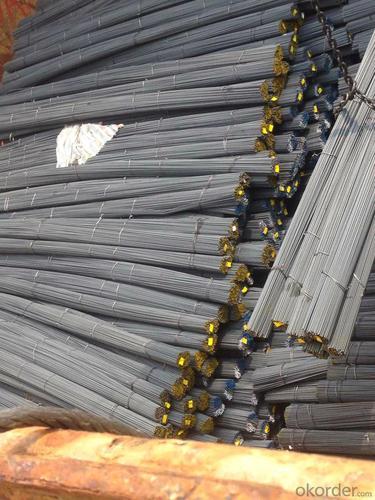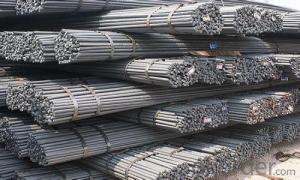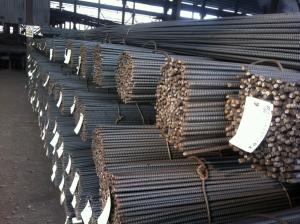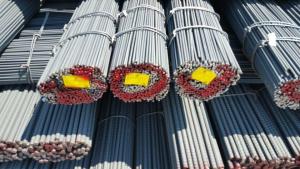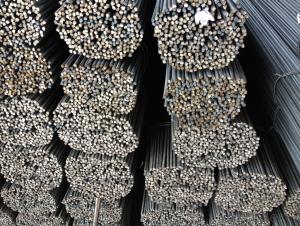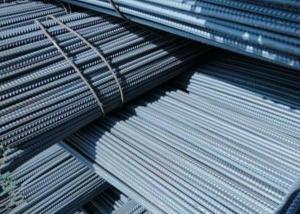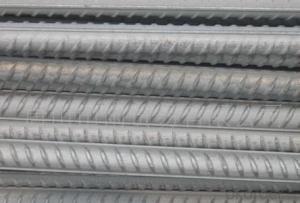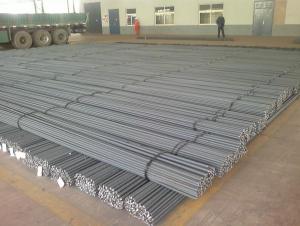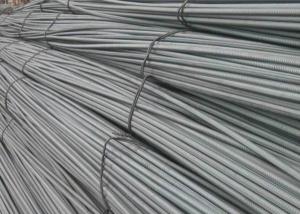Deformed Steel Bar with Reinforced Function for Construction
- Loading Port:
- Tianjin
- Payment Terms:
- TT OR LC
- Min Order Qty:
- 30 m.t.
- Supply Capability:
- 200000 m.t./month
OKorder Service Pledge
OKorder Financial Service
You Might Also Like
Specification
Product Description:
OKorder is offering Deformed Steel Bar with Reinforced Function for Constructionat great prices with worldwide shipping. Our supplier is a world-class manufacturer of steel, with our products utilized the world over. OKorder annually supplies products to European, North American and Asian markets. We provide quotations within 24 hours of receiving an inquiry and guarantee competitive prices.
Product Applications:
Deformed Steel Bar with Reinforced Function for Construction are ideal for structural applications and are widely used in the construction of buildings and bridges, and the manufacturing, petrochemical, and transportation industries.
Product Advantages:
OKorder's Deformed Steel Bar with Reinforced Function for Constructionare durable, strong, and resist corrosion.
Main Product Features:
· Premium quality
· Prompt delivery & seaworthy packing (30 days after receiving deposit)
· Corrosion resistance
· Can be recycled and reused
· Mill test certification
· Professional Service
· Competitive pricing
Product Specifications:
Standard | GB | HRB400 | |
Diameter | 6mm,8mm,10mm,12mm,14mm,16mm,18mm,20mm, 22mm,25mm,28mm,32mm,36mm,40mm,50mm | ||
Length | 6M, 9M,12M or as required | ||
Place of origin | Hebei, China mainland | ||
Advantages | exact size, regular package, chemical and mechanical properties are stable. | ||
Type | Hot rolled deformed steel bar | ||
Brand name | DRAGON | ||
Chemical Composition: (Please kindly find our chemistry of our material based on HRB500 as below for your information)
Grade | Technical data of the original chemical composition (%) | ||||||
C | Mn | Si | S | P | V | ||
HRB400 | ≤0.25 | ≤1.60 | ≤0.80 | ≤0.045 | ≤0.045 | 0.04-0.12 | |
Physical capability | |||||||
Yield Strength (N/cm²) | Tensile Strength (N/cm²) | Elongation (%) | |||||
≥400 | ≥570 | ≥14 | |||||
Theoretical weight and section area of each diameter as below for your information:
Diameter(mm) | Section area (mm²) | Mass(kg/m) | Weight of 12m bar(kg) |
6 | 28.27 | 0.222 | 2.664 |
8 | 50.27 | 0.395 | 4.74 |
10 | 78.54 | 0.617 | 7.404 |
12 | 113.1 | 0.888 | 10.656 |
14 | 153.9 | 1.21 | 14.52 |
16 | 201.1 | 1.58 | 18.96 |
18 | 254.5 | 2.00 | 24 |
20 | 314.2 | 2.47 | 29.64 |
22 | 380.1 | 2.98 | 35.76 |
25 | 490.9 | 3.85 | 46.2 |
28 | 615.8 | 4.83 | 57.96 |
32 | 804.2 | 6.31 | 75.72 |
36 | 1018 | 7.99 | 98.88 |
40 | 1257 | 9.87 | 118.44 |
50 | 1964 | 15.42 | 185.04 |
Usage and Applications of Deformed Steel Bar with Reinforced Function for Construction:
Deformed bar is widely used in buildings, bridges, roads and other engineering construction. Big to highways, railways, bridges, culverts, tunnels, public facilities such as flood control, dam, small to housing construction, beam, column, wall and the foundation of the plate, deformed bar is an integral structure material. With the development of world economy and the vigorous development of infrastructure construction, real estate, the demand for deformed bar will be larger and larger..
Packaging & Delivery ofDeformed Steel Bar with Reinforced Function for Construction:
Packaging Detail: products are packed in bundle and then shipped by container or bulk vessel, deformed bar is usually naked strapping delivery, when storing, please pay attention to moisture proof. The performance of rust will produce adverse effect.
Each bundle weight: 2-3MT, or as required
Payment term: TT or L/C
Delivery Detail: within 45 days after received advanced payment or LC.
Label: to be specified by customer, generally, each bundle has 1-2 labels
Trade terms: FOB, CFR, CIF
Images of Deformed Steel Bar with Reinforced Function for Construction
I
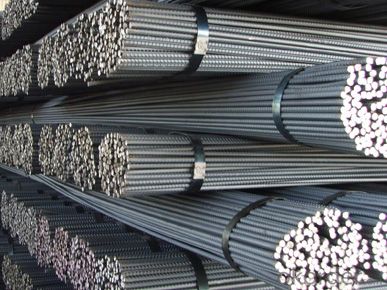
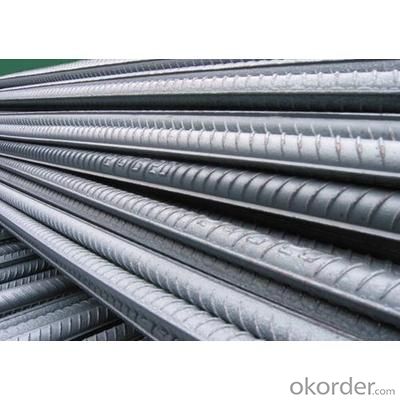
Note:
1. Our products are produced according to national standard (GB), if not, supply according to national standards (GB) or agreement as customer required.
2. Other Grade and Standard Deformed Steel Bar we can supply:
Grade: GR40/GR60, G460B/B500A/B500B/B500C,BST500S
Standard: ASTM, BS, DIN
The Minimum Order Quantity of these products is high, and need to be confirmed.
3. We can not only supply Deformed Steel Bar; if you need anything about building materials, please contact us for further information.
4. Please send us your detail specifications when inquire. We will reply to you as soon as possible. We sincerely hope we can establish a long stable business relationship.
FAQ:
Q1: How soon can we receive the product after purchase?
A1: Within three days of placing an order, we will begin production. The specific shipping date is dependent upon international and government factors, but is typically 7 to 10 workdays.
Q2: What makes stainless steel stainless?
A2: Stainless steel must contain at least 10.5 % chromium. It is this element that reacts with the oxygen in the air to form a complex chrome-oxide surface layer that is invisible but strong enough to prevent further oxygen from "staining" (rusting) the surface. Higher levels of chromium and the addition of other alloying elements such as nickel and molybdenum enhance this surface layer and improve the corrosion resistance of the stainless material.
- Q: Can steel rebars be used in the construction of airports?
- Yes, steel rebars can be used in the construction of airports. Rebars are commonly used in concrete structures to provide reinforcement and increase the strength and durability of the construction. Given the heavy loads, long spans, and high traffic volumes associated with airports, steel rebars are essential for ensuring the structural integrity of runways, taxiways, and other airport infrastructure.
- Q: How are steel rebars marked for identification on construction sites?
- Steel rebars are typically marked with a series of symbols, numbers, and colors to identify their size, grade, and other specifications. These markings are usually either painted or embossed on the surface of the rebars, making it easier for construction workers to identify and use them correctly during the construction process.
- Q: 14 screw steel 1 meters multiple?
- The performance of classification (class), for example, China's current implementation of standards, (G B1499.2-2007) for steel wire for 1499.1-2008), according to the strength (tensile strength yield point / steel) will be divided into 3 levels; the Japanese industrial standard (JI SG3112), according to the comprehensive performance will be divided into thread steel 5 species; the British Standard (BS4461), also provides some level of performance test of thread steel. In addition, the thread steel can be classified according to the use, such as reinforced concrete, ordinary steel bars and reinforced concrete bars for heat treatment.
- Q: How are steel rebars protected from fire damage?
- Steel rebars are typically protected from fire damage through the application of fire-resistant coatings or by encasing them within fire-resistant materials, such as concrete. This helps to prevent the steel rebar from reaching its critical temperature, which could compromise its structural integrity.
- Q: Are steel rebars fire resistant?
- Yes, steel rebars are fire resistant.
- Q: How are steel rebars anchored into existing concrete?
- Reinforcing existing concrete structures commonly involves the use of steel rebars. The process to anchor these rebars into the concrete consists of several steps. Firstly, preparation of the concrete surface is necessary. This typically includes cleaning the area where the rebar will be anchored in order to remove any dirt, debris, or loose concrete. Additionally, roughening the surface may be required to enhance adhesion. After the surface is prepared, a bonding agent such as epoxy or a cementitious grout is applied. This bonding agent facilitates a strong bond between the rebar and the concrete. Next, the steel rebar is positioned and inserted into the prepared area. The depth at which the rebar is inserted into the concrete depends on the required anchorage depth and design specifications. Alignment at the correct depth is essential, in accordance with the structural requirements. To ensure proper anchorage, it is often necessary to bend or hook the end of the rebar. This prevents the rebar from pulling out of the concrete under tension or external forces. Lastly, the bonding agent is left to cure as per the manufacturer's instructions. This allows it to harden and form a strong bond between the rebar and the concrete. It is important to note that the precise method of anchoring steel rebars into existing concrete may vary based on the specific application and design requirements. Additional reinforcement methods, such as mechanical anchors or post-installed anchors, may be utilized in certain cases to enhance anchorage strength. Expertise from professionals and adherence to engineering guidelines are crucial to ensure the proper and safe anchoring of steel rebars into existing concrete structures.
- Q: How many patterns are there in threaded steel?
- Rebar is ribbed steel, ribbed steel, including rebar. A ribbed steel bar with 2 longitudinal ribs and uniformly distributed ribs along the length. The transverse rib shape is helical, herringbone, crescent 3. Because of the function of rib, it has better bonding ability with concrete, so it can bear the effect of external force better.
- Q: Are steel rebars susceptible to stress corrosion cracking?
- Yes, steel rebars are susceptible to stress corrosion cracking, particularly in environments with high chloride content such as coastal regions or areas with deicing salts. The combination of tensile stress, corrosion, and the presence of certain corrosive agents can lead to the formation and propagation of cracks, compromising the structural integrity of the rebars.
- Q: Can steel rebars be used in retaining walls and dams?
- Yes, steel rebars can be used in retaining walls and dams. Steel rebars provide reinforcement and strength to these structures, helping to resist lateral forces and prevent cracking or failure. The use of steel rebars ensures the structural integrity and long-term stability of retaining walls and dams.
- Q: What is the lifespan of steel rebars in concrete structures?
- The lifespan of steel rebars in concrete structures can vary due to a range of factors. Generally, steel rebars are designed to provide concrete structures with durability and strength. Through proper design, construction, and maintenance, steel rebars can endure for many decades or even up to a century within concrete structures. One crucial factor that affects the lifespan of steel rebars is the quality of materials utilized. Rebars of high quality, which have corrosion-resistant coatings or are made of stainless steel, tend to last longer compared to regular carbon steel rebars. Moreover, the quality of the concrete used and its ability to shield the rebars from moisture and corrosive agents is also significant. Environmental conditions play a significant role in determining the lifespan of steel rebars. Exposure to harsh climates, such as regions with high humidity, saltwater, or acidic environments, can expedite corrosion and reduce the lifespan of the rebars. Adequate protective measures, such as maintaining the proper thickness of concrete cover, implementing waterproofing techniques, and utilizing corrosion inhibitors, can help extend the lifespan of steel rebars in such conditions. Maintenance and inspection are essential to ensure the longevity of steel rebars in concrete structures. Regular inspections should be conducted to detect signs of corrosion, cracking, or damage, and any necessary repairs or protective measures should be promptly undertaken. In certain cases, periodic coating or replacement of rebars may be necessary to uphold the structural integrity of the concrete elements. In conclusion, the lifespan of steel rebars in concrete structures can range from several decades to over a century, depending on various factors including material quality, environmental conditions, and proper maintenance. By implementing appropriate design, construction, and maintenance practices, the lifespan of steel rebars can be significantly prolonged, guaranteeing the long-term integrity and durability of the concrete structure.
Send your message to us
Deformed Steel Bar with Reinforced Function for Construction
- Loading Port:
- Tianjin
- Payment Terms:
- TT OR LC
- Min Order Qty:
- 30 m.t.
- Supply Capability:
- 200000 m.t./month
OKorder Service Pledge
OKorder Financial Service
Similar products
Hot products
Hot Searches
Related keywords

